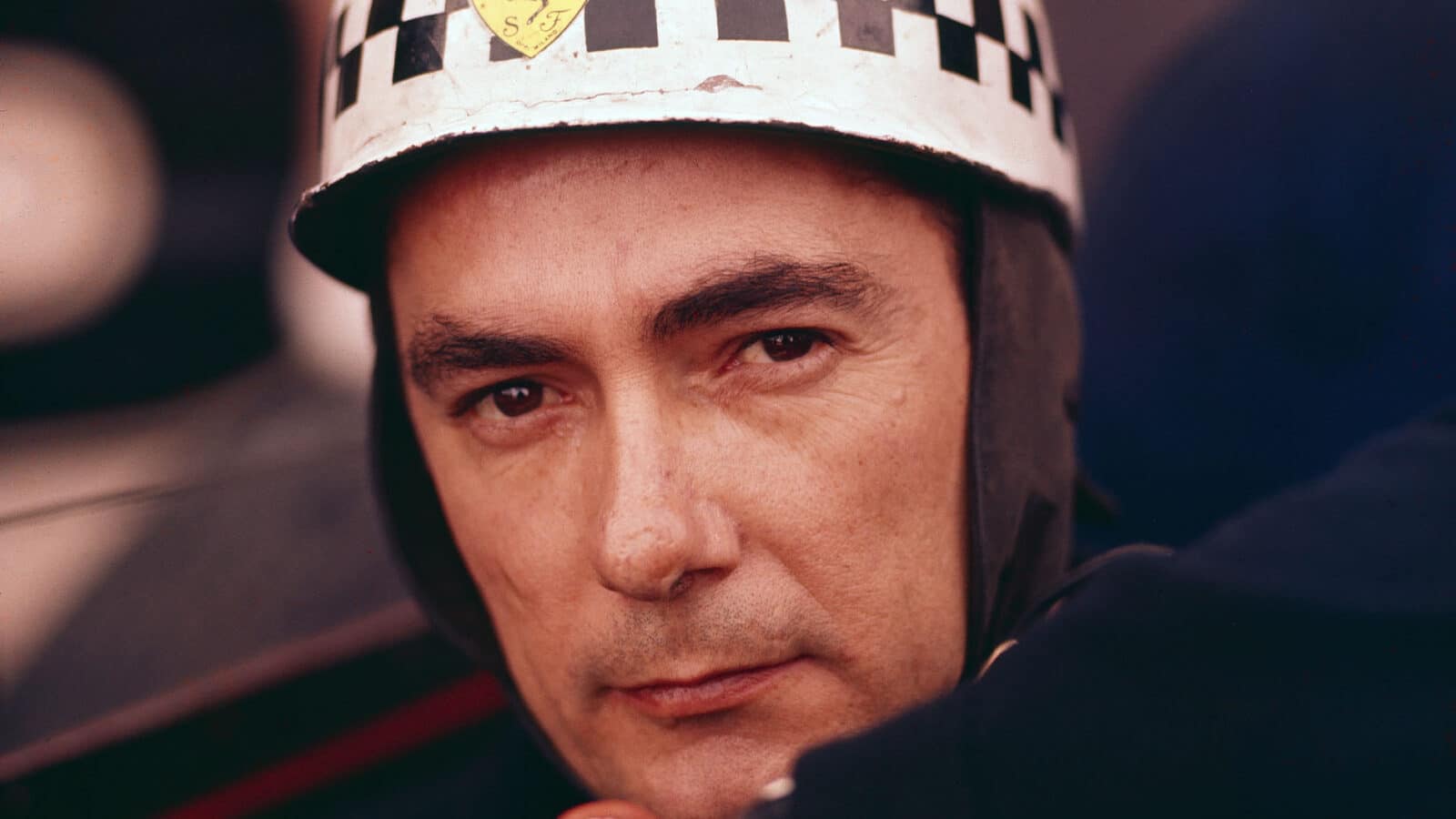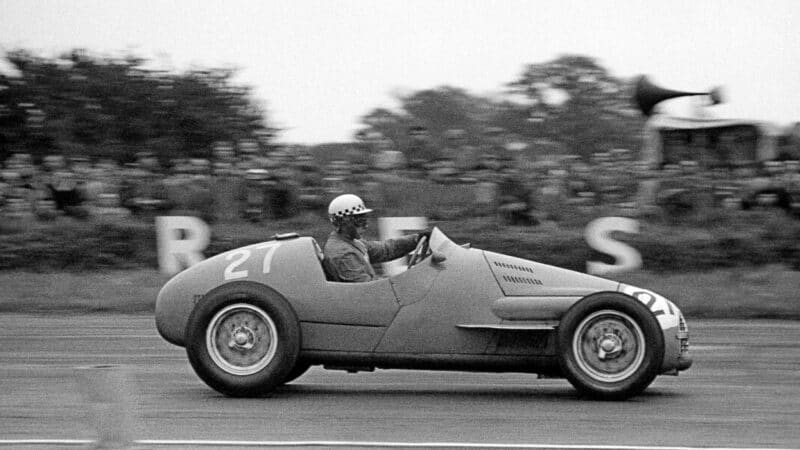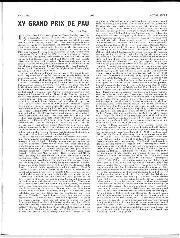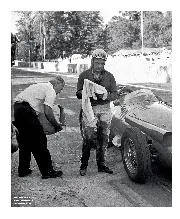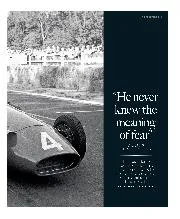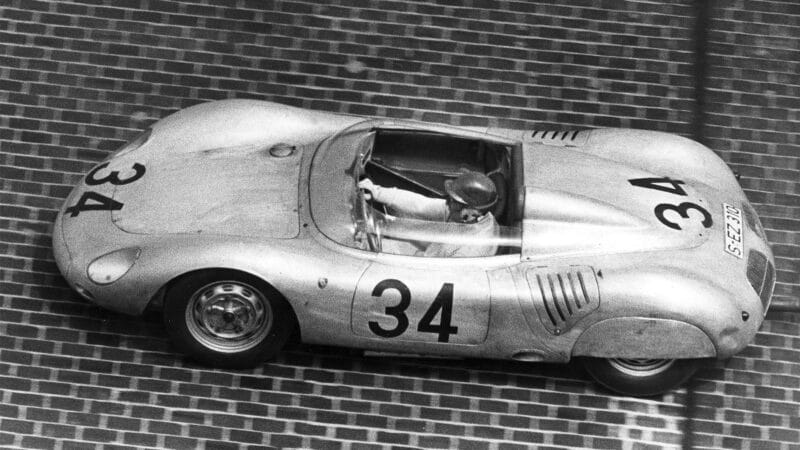Why he was of surpassing importance to me, I cannot tell you, because I don’t have the answer. It didn’t matter to me that there were greater drivers, that he was never eorld champion, nor even – somehow – won a ‘Grande Epreuve’; what appealed primarily, I suppose, was his utter fearlessness. Fangio was right when he described him as “too brave”, but this can never be a fault in a childhood hero.
Those of us in thrall to grand prix racing support certain drivers throughout our lives, and if favourites of mine have included such as Prost, an elegant stylist who made it look easy, more usually I have been more drawn to the derring-do brigade, to Rindt, Peterson and, above all, Gilles Villeneuve.
Among the current drivers, Alesi is one I root for, and Jabby Crombac is not surprised: “But of course Alesi is the Jean Behra of today! Lovely guy, looks the part, tremendous guts, too emotional, drives with his heart…”
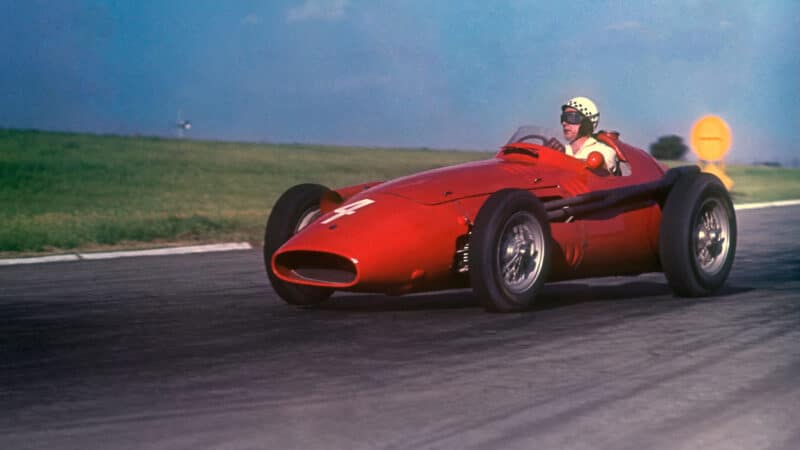
Behra racing in Buenos Aires in his final year of competition
Grand Prix Photo
Denis Jenkinson was another who thought highly of Behra, and down the years we sank many a cognac as we talked of him. “More than anything else,” he said, “what I liked about him was his pure love of racing cars. He was a good mechanic in his own right, but he never fettled cars for the fun of it: the only thing that mattered was making them faster. They loved him at Maserati, because he was happy to ‘live above the shop.’”
Then, the ultimate accolade from DSJ: “There was no bullshit about Jean. He was a racer’s racer.”
In the 1950s Jenks was frequently in Modena, where Behra was an almost permanent resident at the Albergo Reale. For ‘Jeannot’, a day without some time in a racing car was a day lost, and he savoured every opportunity to pound around the nearby autodromo, then passing the evening playing cards and drinking wine and talking racing.
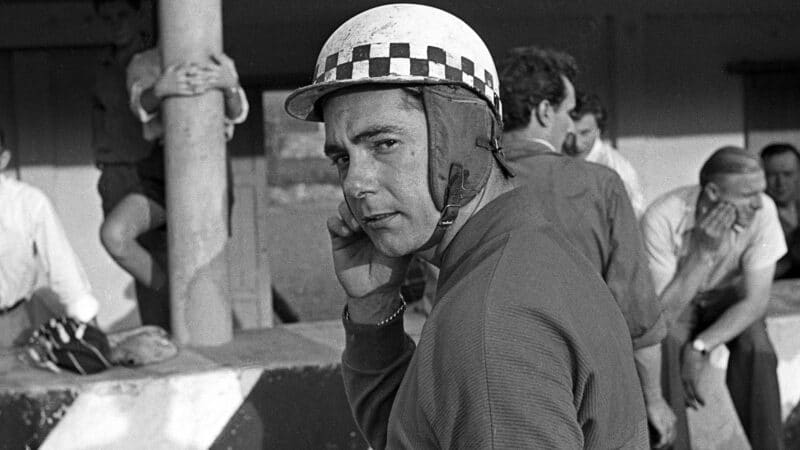
Behra was at his happiest driving for Maserati and Ferrari
Bernard Cahier / Getty Images
It was an existence he found completely fulfilling, and the association with Maserati, whom he joined in 1955, was the happiest of his racing life. Gordini had been fun, but after four seasons the chronic lack of both pace and reliability had become wearisome to one now recognised as among the world’s top drivers.
Raymond Mays (for whose BRM team Behra later drove) once related to me an anecdote very revealing of Jean’s love affair with his job. “I don’t think he could ever quite believe his luck that people would actually pay him to drive racing cars.
“He was a magnificent little driver, and a charming man, but terribly temperamental in a French sort of way. If things weren’t going too well, he sometimes got a bit demoralised, but he was never depressed for long, and I asked him how he kept his spirits up.
“When times were bad, he told me, he would get his passport out. ‘I look at all the stamps in there, the places racing has taken me to, and then I look at the first page. Name: Jean Behra. Profession: Racing Driver. And it reminds me again how lucky I am to have this life.’
